The pain and outcome of a tattoo can vary based on location, size, and design. Some may feel regret due to the discomfort or final result.
Some tattoo placements are more painful. These include the head, face, hands, fingers, feet, toes, ribcage, shoulder blade, collarbones, hips, ankles, armpit, groin, and buttocks. These areas are more sensitive due to less body fat and more nerve endings.
This article will delve into some of the most painful tattoo locations and provide tips on managing the discomfort.
Where is Most Painful Place to Get A Tattoo: List of 38 (Pain Scale 1-10/10)

The pain factor associated with the tattooing process is an inevitable consideration. Understanding the pain scale and identifying the most and least painful spots can significantly enhance your tattooing experience.
We delve into the intricacies of tattoo pain, highlighting the most painful places, the surprisingly tolerable areas, and those that fall in between.
Most Painful Tattoos (Pain Scale Ranking 7-10/10)
Pain levels depend on size, design, and location. Some areas have thinner skin and fewer cushioning layers, making them more painful. Here are the most painful tattoos ranked from 1 to 10.
Head

The head is a complex tattoo area that can be painful between 7 and 10. The head has many nerve endings, especially on the face, and fragile skin close to the bone. The head also moves a lot, Making tattooing more difficult and uncomfortable. Here are some of the most painful areas on the head to get a tattoo:
Forehead
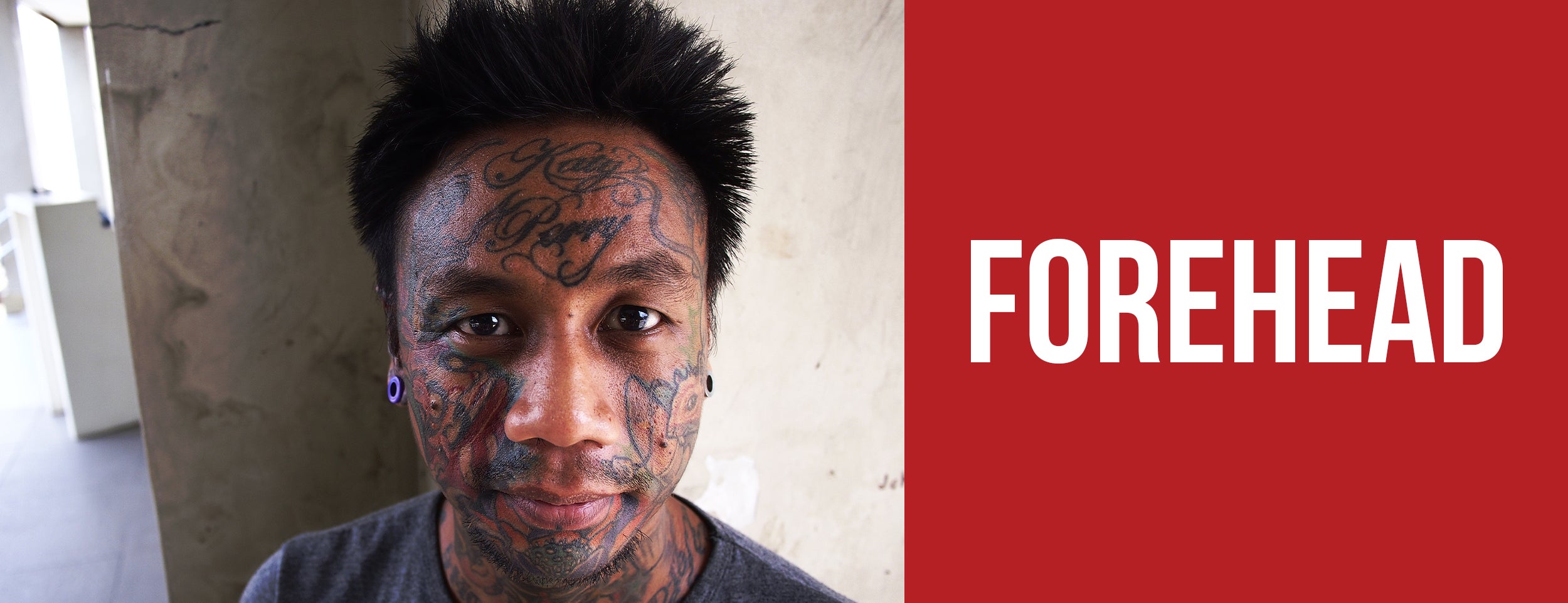
The forehead is a susceptible area, ranked 9 to 10. The skin on the forehead is fragile and tight, and there is almost no fat or muscle to protect the bone. The forehead also has many nerve endings, so tattoos feel like a burning or stabbing sensation. The forehead is also very visible, making the tattoo more prone to swelling, bleeding, and infection.
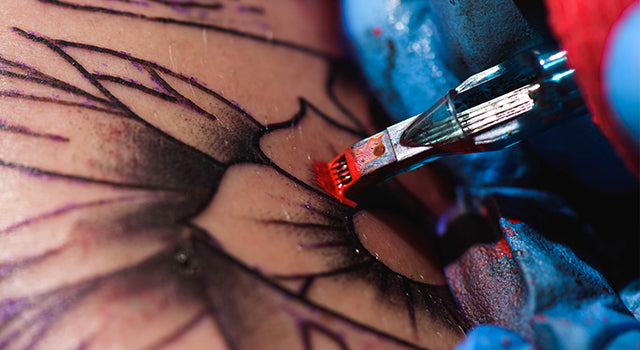
Temple
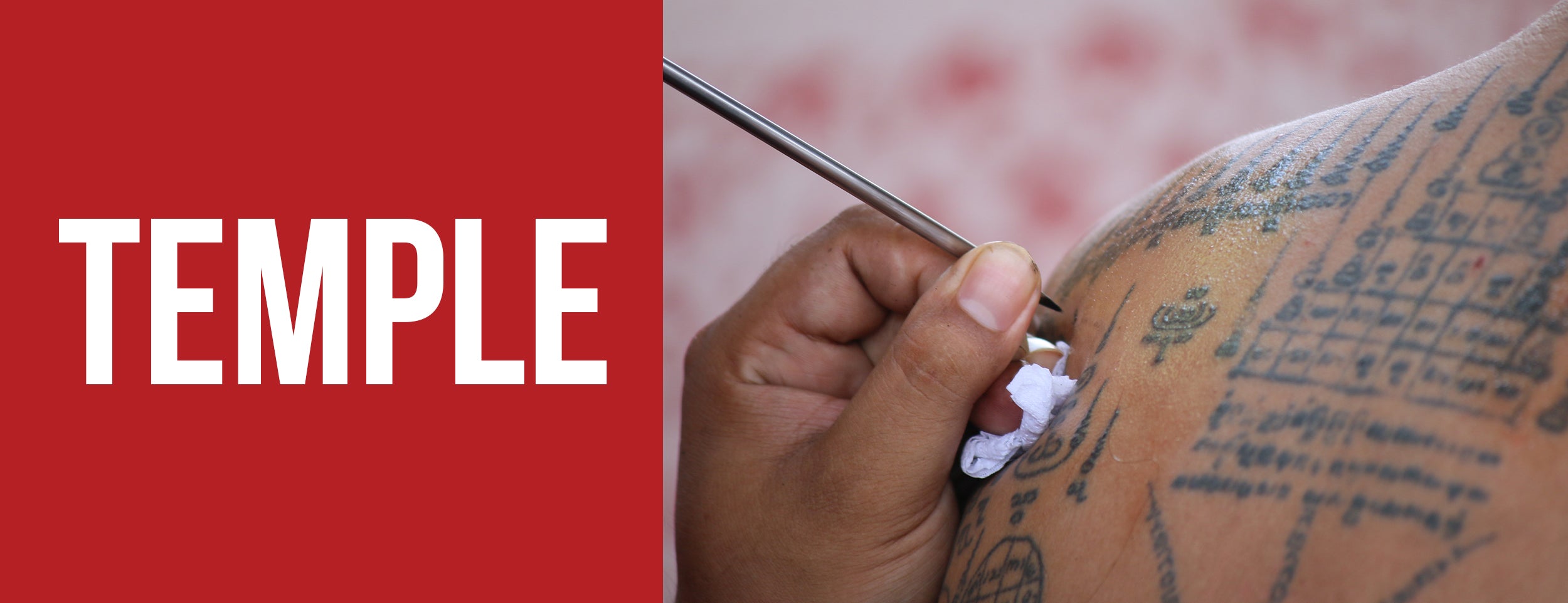
The temple is another excruciating area, ranking 8 to 10. The temple is on the head's side, near the eye and the ear. The skin on the temple is also fragile and close to the bone, and blood vessels and nerve endings abound.
The temple is also a delicate and vital body part, making tattooing here risky. The tattoo can damage nerves, muscles, or blood vessels and affect vision, hearing, or facial movements.
Scalp
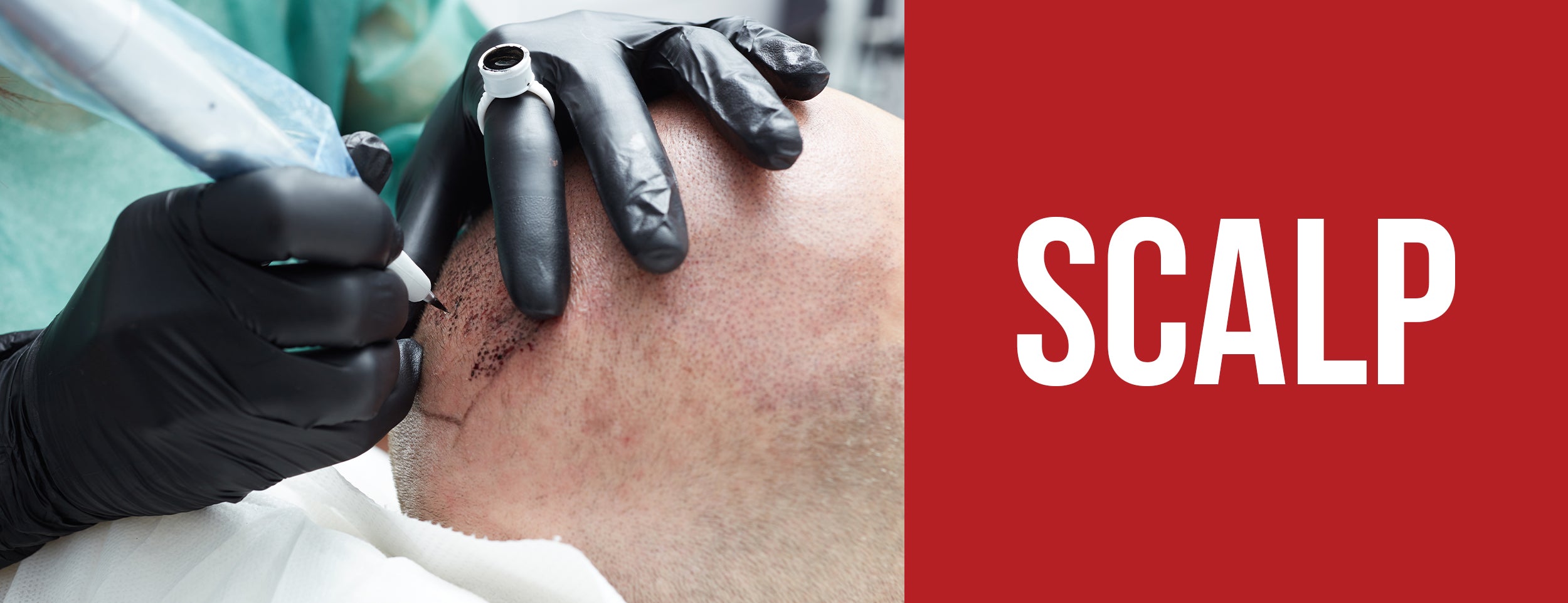
The scalp is the area of the head covered by hair. On a scale of 7-9, getting a tattoo on the scalp can be painful. The scalp has many nerve endings and blood vessels, and the skin is fragile and close to the skull.
The scalp also has many hair follicles, which can make the tattooing process more painful and irritating. The scalp can also be a tricky area to tattoo, as the hair can get in the way and affect the visibility and accuracy of the tattoo artist.
Elbow

There is also a problem with tattooing the elbow, whose pain scale ranges from 7 to 10. Elbows bend and move a lot. They're flimsy and don't have much muscle to cushion them. The elbow also has many nerve endings and tendons, so tattoos feel like sharp or throbbing pain.
The elbow is also a complex and uneven surface, making the tattooing process more challenging and time-consuming. The elbow can also be a sensitive and vulnerable area, negatively affecting mobility and flexibility.
Hand and Fingers
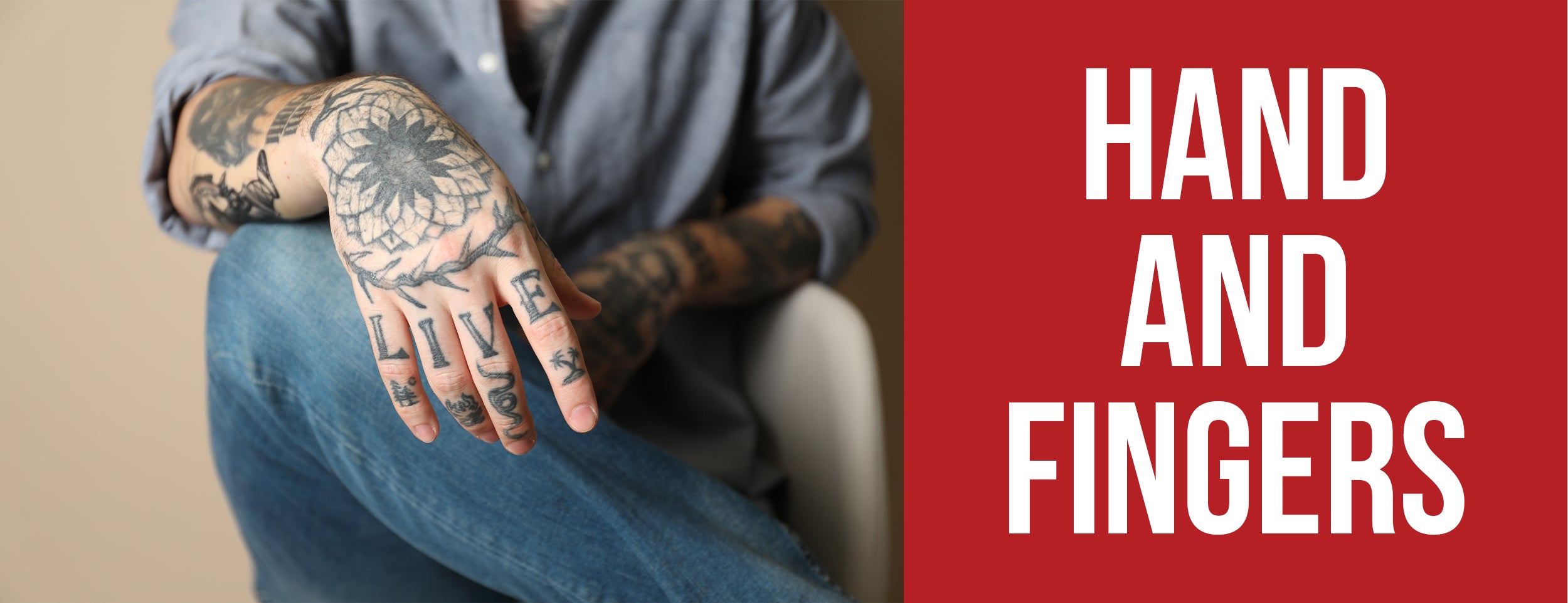
Tattoos on the hands and fingers can be harrowing. The writing and fingers have many nerve endings, which make them very sensitive to touch and pain. The skin on the hands and fingers is also delicate and close to the bone, making tattoos painful.
The writing and fingers are also exposed to friction, movement, and sunlight, which affects healing. The following are the most painful areas of the hand and fingers to get a tattoo,
Palm

The palm is one of the worst, ranking 9 to 10. The palm has a high concentration of nerve endings, resulting in burning or piercing pain. The palm also has thick and tough skin, which makes tattooing more complex, requiring more pressure and ink. The palm is also prone to sweating, which can interfere with the healing and fading of the tattoo.
Fingertips

The fingertips are another excruciating area of the hand, with a pain rating of 8 to 10. The fingertips have many nerve endings, so tattoos are a sharp and electric pain. The fingertips also have thin skin fat to cushion the bone, so tattoos feel like hammering. The fingertips are also subject to wear and tear, which can affect the healing and durability of the tattoo.

Ribs

The ribs are also tricky places to get tattoos, with pain levels of 7 to 10. The ribs have fragile skin and little muscle to protect bone, making the tattoo feel like scraping or drilling pain. The ribs also have many nerve endings, which cause tattoos to feel like they are throbbing or pulsing.
Your breathing also affects the ribs, making the tattooing process more uncomfortable and unpredictable. There are a few painful places on the ribs to get a tattoo:
Ribcage
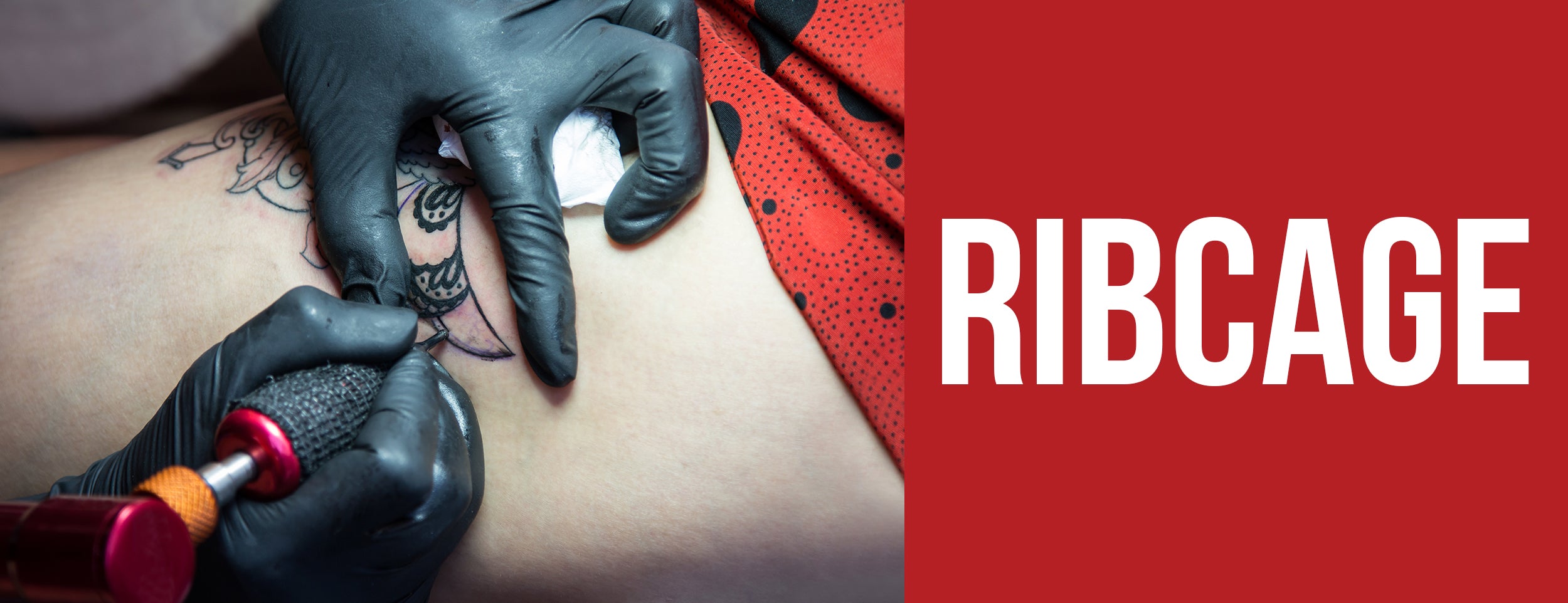
The ribcage is the area of the ribs that covers the chest and abdomen. The ribcage hurts for tattoos, averaging from 8/10. The ribcage lacks fat and muscle, so tattoos are painful.
Several nerve endings in the ribcage can also cause shooting or radiating pain. Your breathing also influences the ribcage, increasing the level of pain.
Sternum

A sternum connects the ribs in the center of the chest. The sternum is an excruciating spot to tattoo, with pain levels ranging from 9 to 10. The sternum has fragile skin and no fat or muscle to cushion the bone, making tattoos feel like cutting or breaking.
The sternum also has numerous nerve endings, causing searing or exploding pain. The sternum is also affected by your breathing and heartbeat, making the tattooing process more difficult and unbearable.
Spine
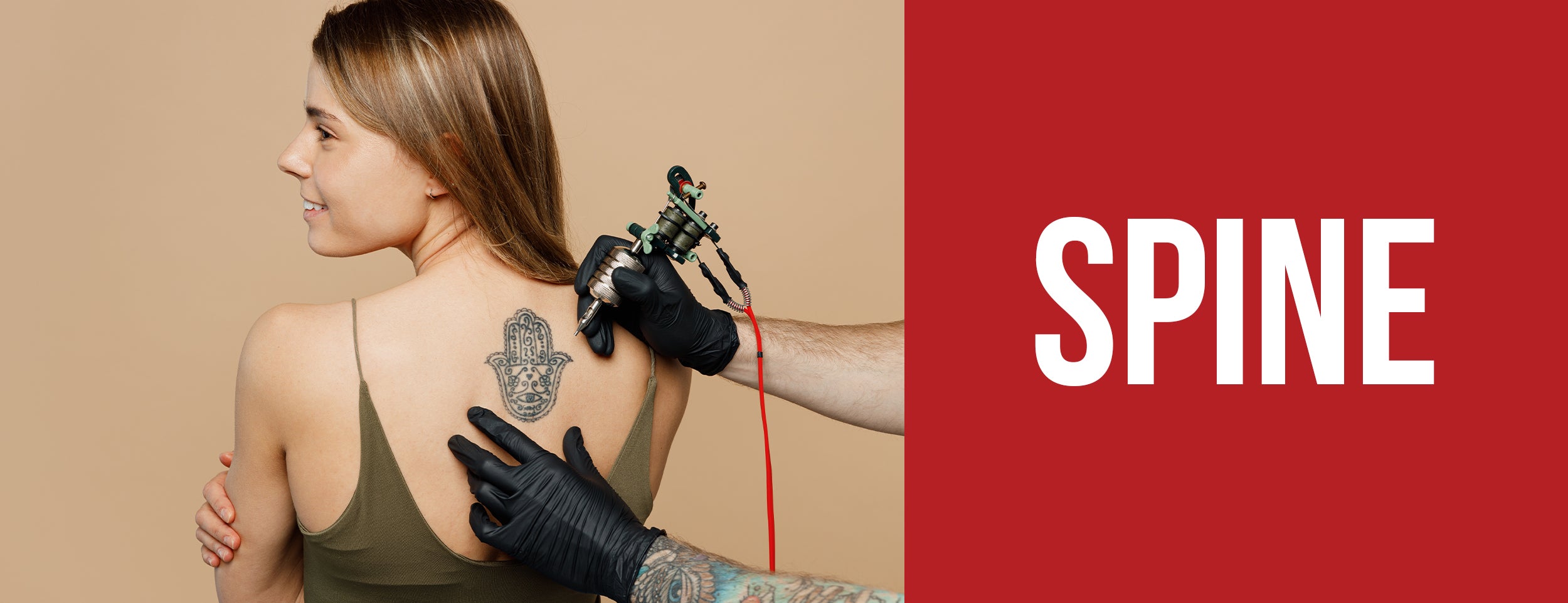
The spine is another harrowing place where tattoos hurt, ranging from a pain level of 7 to 10. The spine has fragile skin and no muscles to protect bone, so tattoos feel like scratching or cracking pain. The spine contains many nerve endings, causing the tattoo to feel tingly or numb.
The spine is also a complex and delicate area, so it is risky to tattoo it. A tattoo can harm nerves, muscles, or discs and affect your posture, movement, or sensation.
Neck

The neck is also a painful area for tattoos, ranging from 7 to 10. The neck has many nerve endings, which make it sensitive to pain and touch. The neck's skin is fragile near its bone, making tattoos painful.
The channel is also a flexible and mobile body part, which makes tattooing challenging and uncomfortable. You may also experience difficulties breathing, swallowing, or speaking.
Back

The back is a large and diverse area to get a tattoo, and the pain level can vary depending on the location. The back has some more painful spots, ranging from 7 to 10. The back has some areas with thin skin and very little fat to cushion the bone, such as the spine, shoulder blades, and lower back.
These areas can make the tattoo feel like a ripping or pounding pain. The back also has some areas that have many nerve endings, such as the upper back, sides, and lower back. During these areas, the tattoo can feel like stinging or burning pain.
Knee Caps
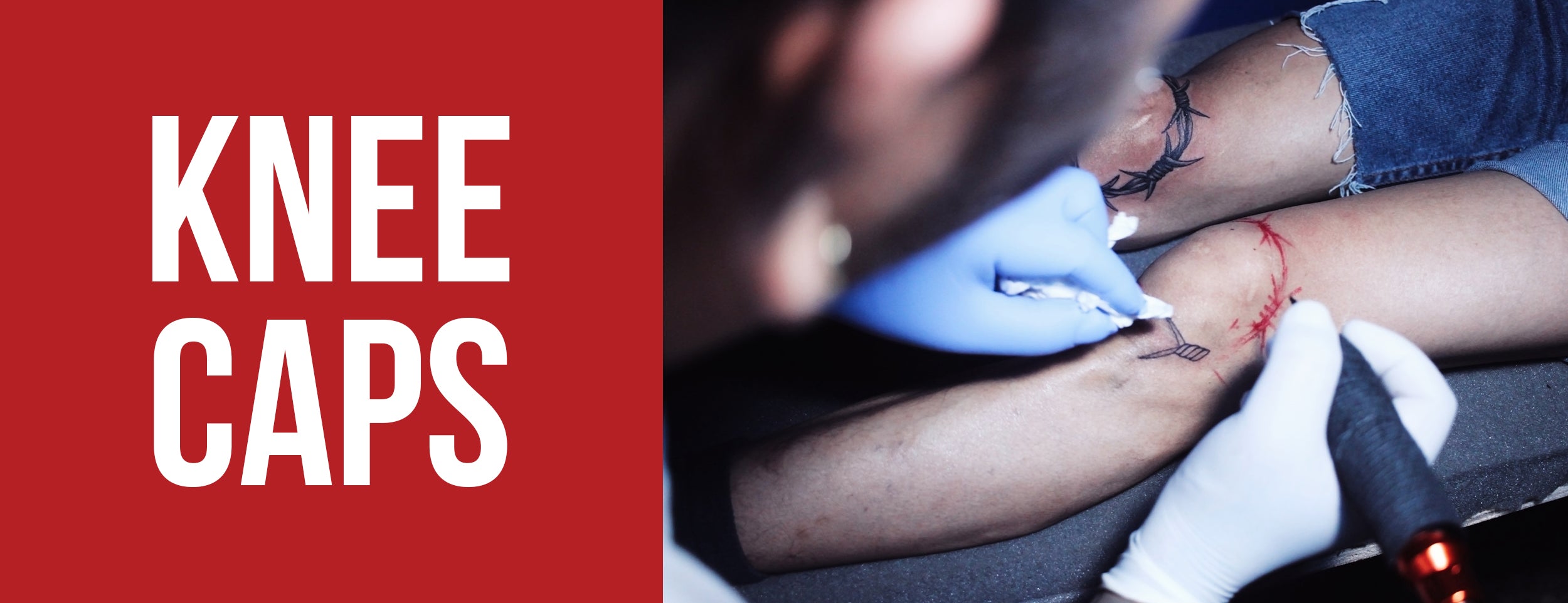
When getting a tattoo, the kneecaps rank 7 to 10 on the pain scale. The knee caps have thin skin that is not protected by fat or muscle, so tattoos feel like scraping or hammering pain. The knee caps also have nerve endings, so the tattoo looks like a sharp or electric pain.
The kneecaps are joints that bend and move a lot, and getting a tattoo here can be difficult. The tattoo can also affect your mobility and flexibility.

Inside of Thigh

The thigh is a problematic area for tattoos. It hurts 7 to 10 area for tattoos. The inside of the thigh has fragile skin and a lot of nerve endings, so tattoos can feel like they are tearing or pinching.
The inner thigh is also close to the groin area, which is very sensitive and makes tattooing awkward. The interior of the thigh is also prone to rubbing and chafing, affecting tattoo healing.
Eyelid
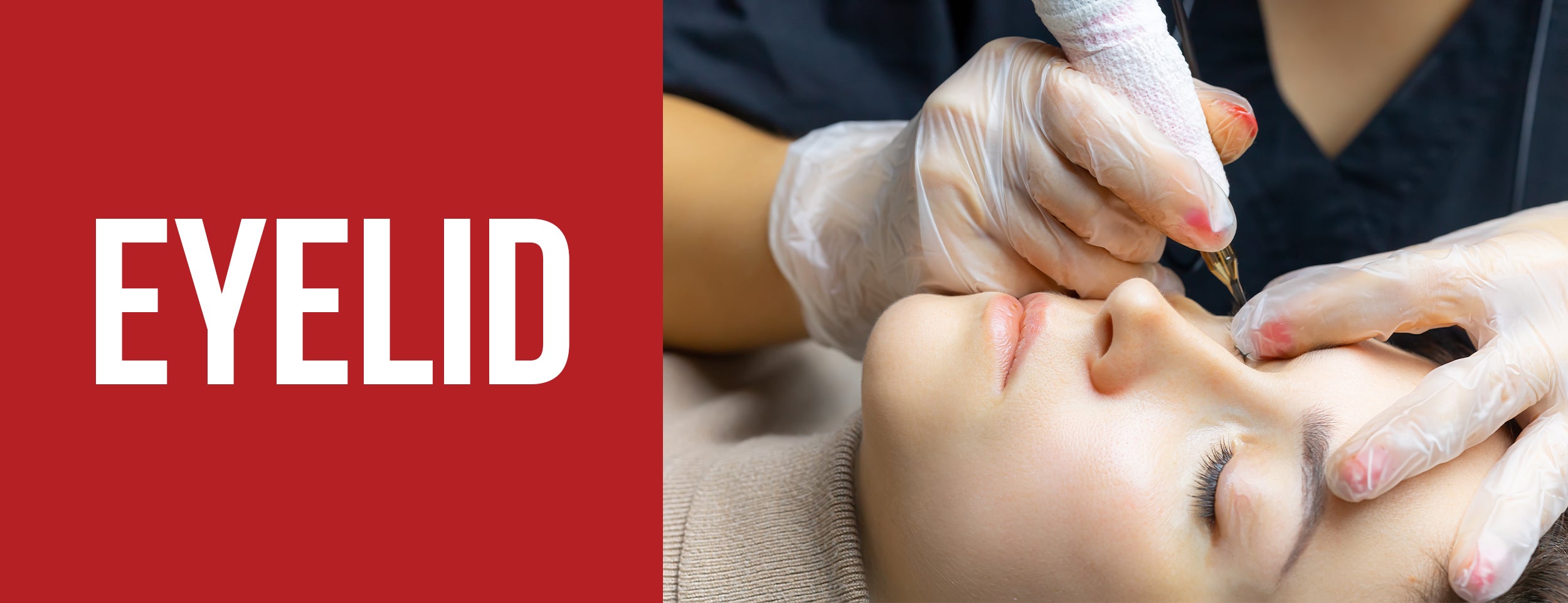
The eyelid is one of the most painful areas for tattoos, ranking 10 on a pain scale. The eyelid has fragile skin and no muscle to protect the eye, so tattoos feel like slicing or burning pain. The eyelid contains blood vessels and nerve endings, which causes shocking or bleeding pain.
The eyelid is an integral part of the body, and tattooing it is risky. It can damage your eyes, eyelashes, or vision, affecting your blinking, sleeping, or crying.
Behind The Ears

The area behind the ears is also uncomfortable for tattoos, rated 8 to 10. The area behind the ears has thin skin and no fat to cushion the bone, which results in scraping or drilling pain. The area behind the ears also has nerve endings, so tattoos feel throbbing or pulsing.
Behind the ears is also complex and uneven, making tattooing more challenging. Behind the ears, there is also a lot of movement, friction, and noise, affecting the healing and appearance of the tattoo.
Eyebrow
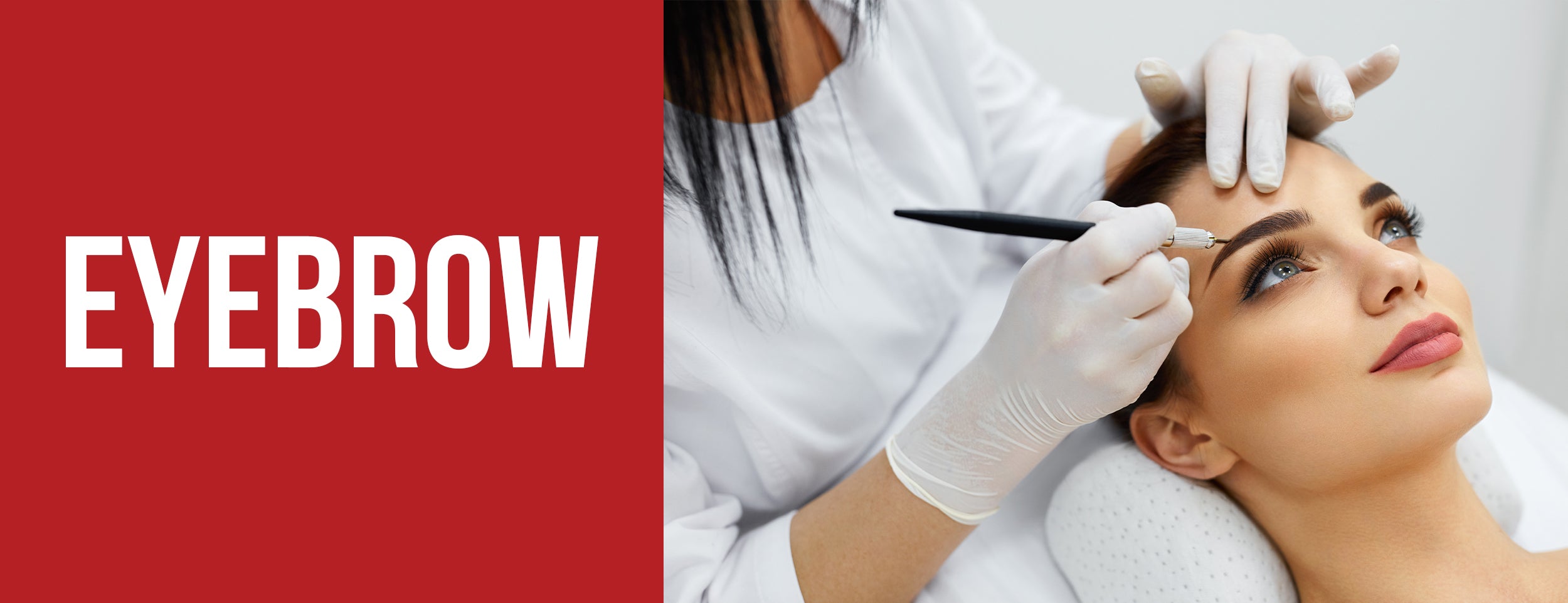
The eyebrow can also be a painful place for tattoos, with pain levels of 8 to 10. Fat or muscle cannot protect the eyebrow, so tattoos hurt like stabbings or cracks. Many nerve endings are in the eyebrow, which can cause stinging or numbing pain.
The eyebrow is also a clear and expressive part of the face, so tattooing here may affect appearance and emotions. The tattoo can also damage the hair follicles, affecting the growth and shape of eyebrows.
Inside of Upper Arm/elbow

The inside of the upper arm or elbow can also be painful for tattoos, ranking 7 to 10. Upper arms and elbows have very little fat and muscle to cover the bone, making tattoos painful. Upper arms and elbows contain many nerves and tendons, so tattoos cause shooting or radiating pain.
The upper arm or elbow is also a joint that bends and moves a lot, making tattooing difficult. It can also affect your flexibility and mobility.
Feet/Ankles
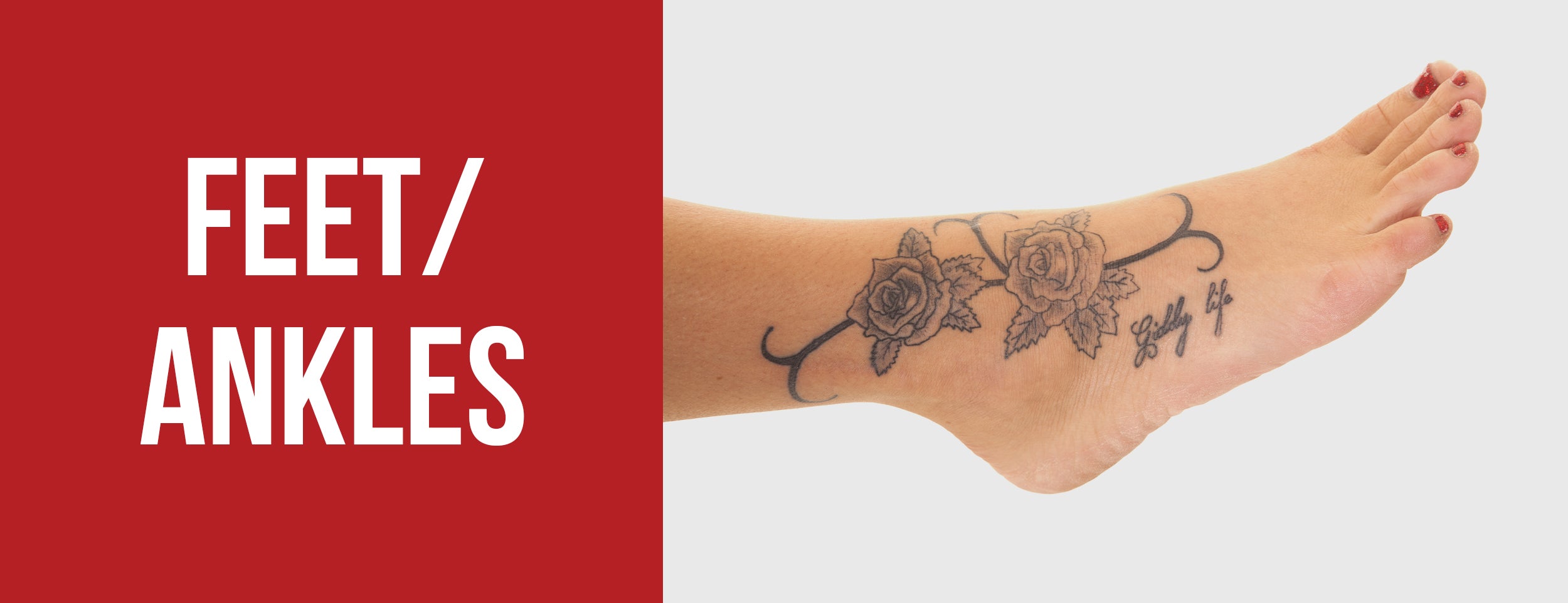
The feet or ankles are also painful, placing 7 to 10 out of 10 for tattoos. The feet or ankles lack muscle to protect the bones, making the tattoo feel like scratching or hammering pain. There are also many nerve endings on the feet or ankles, making the tattoo think it feels sharp or electric.
The feet or ankles can also affect the tattoo's healing and durability. A foot or ankle is also at risk of swelling, bleeding, and infection.
Sole of The Foot

The sole is the most challenging to tattoo because of its pain level of 10. The sole has very thick and tough skin, making tattooing more difficult. The sole also contains many nerve ends, making the tattoo painful.
The sole also suffers from pressure, friction, and dirt, affecting tattoo healing and fading. The sole is also sensitive, making the tattooing more uncomfortable and unbearable.
Anklebones
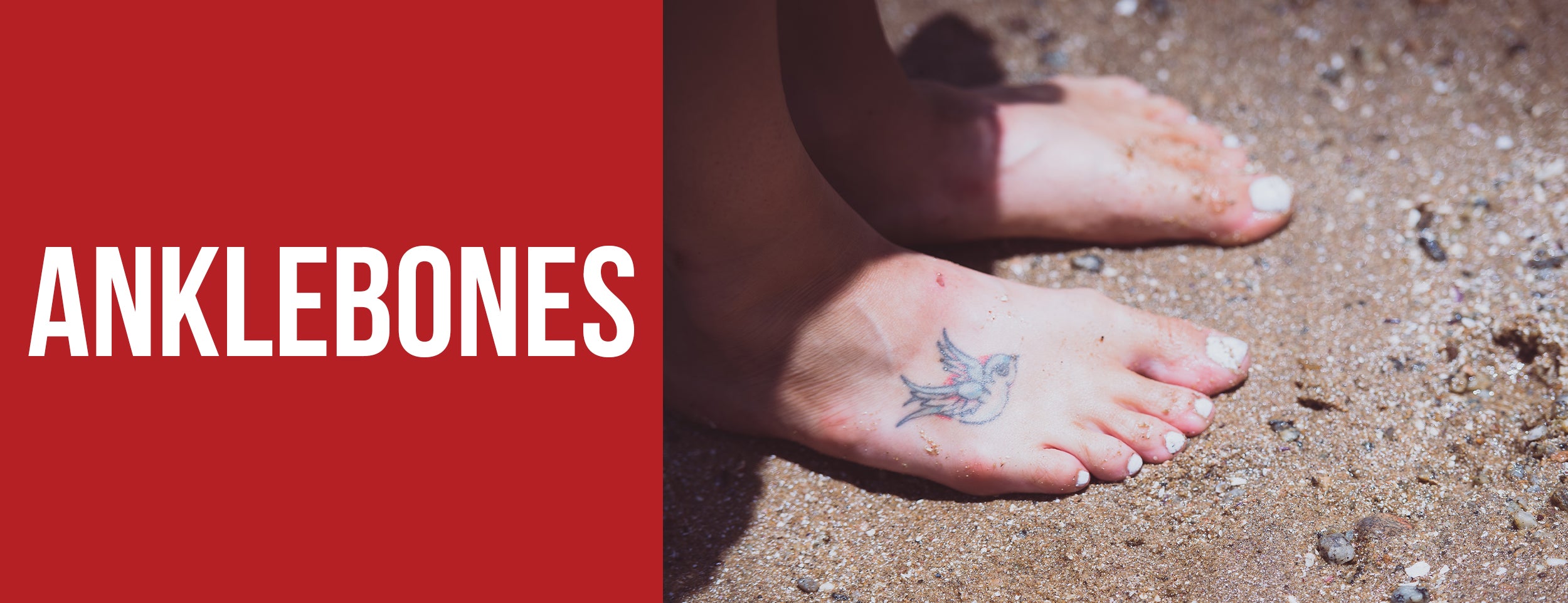
The anklebones are extremely painful when tattooed, ranging from 7 to 10. The anklebones have very thin skin and no muscle to guard the bone, making a tattoo painful.
The anklebones have many nerve endings, making the tattoo look electric or sharp. The anklebones are also subject to friction and movement, which may affect the quality of the tattoo.

Inside of Wrist
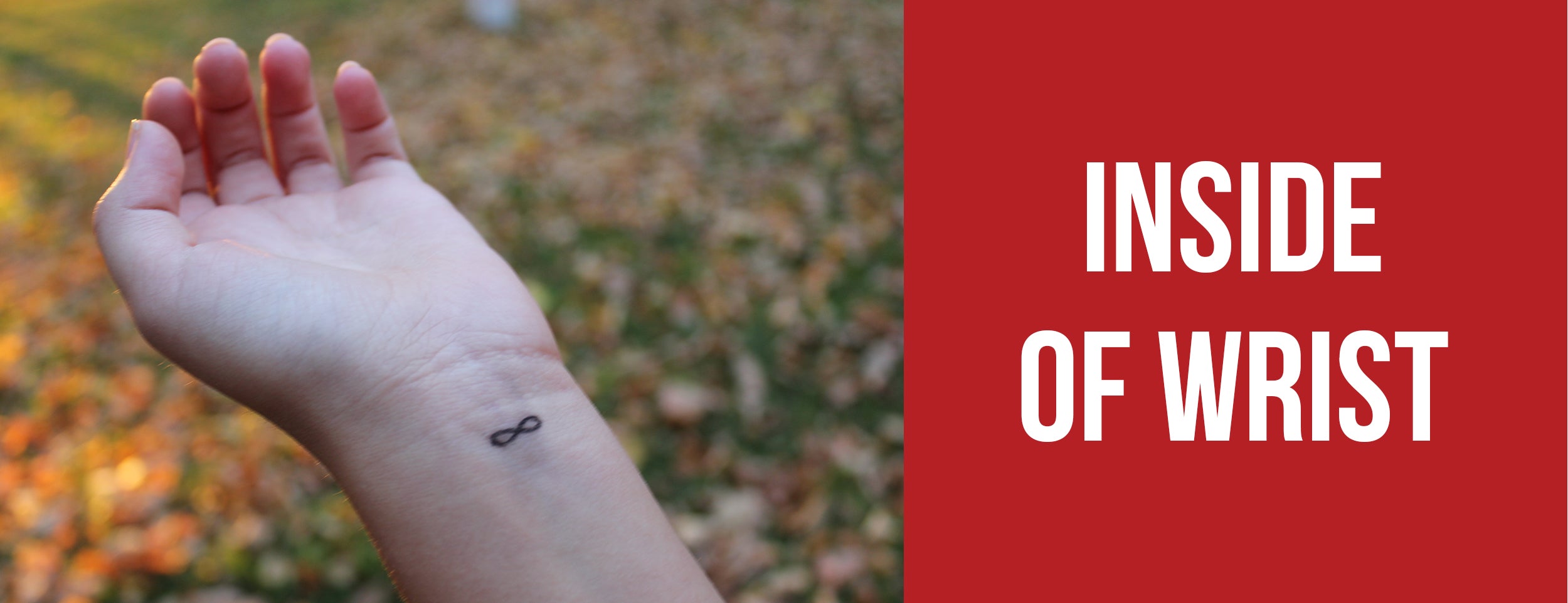
The inside of the wrist is another painful area for tattooing, ranking between 7 and 10. Inside the wrist, the skin is thin and lacks fat or muscle, making the tattoo feel like ripping or pounding pain.
Inside the wrist are nerve endings, which can cause the tattoo to feel shooting or radiating. Inside your wrist is also a sensitive part of the body, so getting a tattoo here may affect blood circulation, pulse, or hand movements.
Hands/Fingers
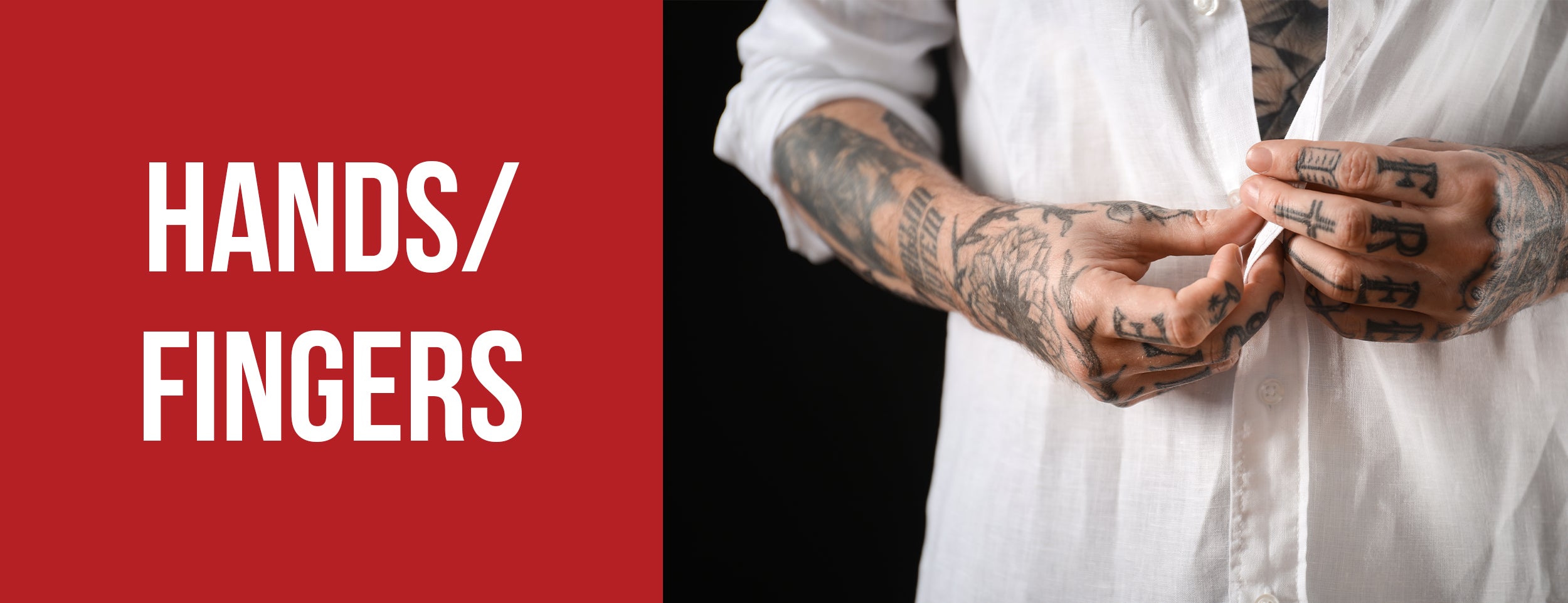
The hands or fingers are also very painful for a tattoo of 7 to 10. The hands or fingers have many nerve endings, making them very sensitive.
The skin on the hands or fingers is also delicate near the bone, making tattoos painful. Friction, movement, and sunlight also affect tattoo healing on fingers and hands.
Armpit
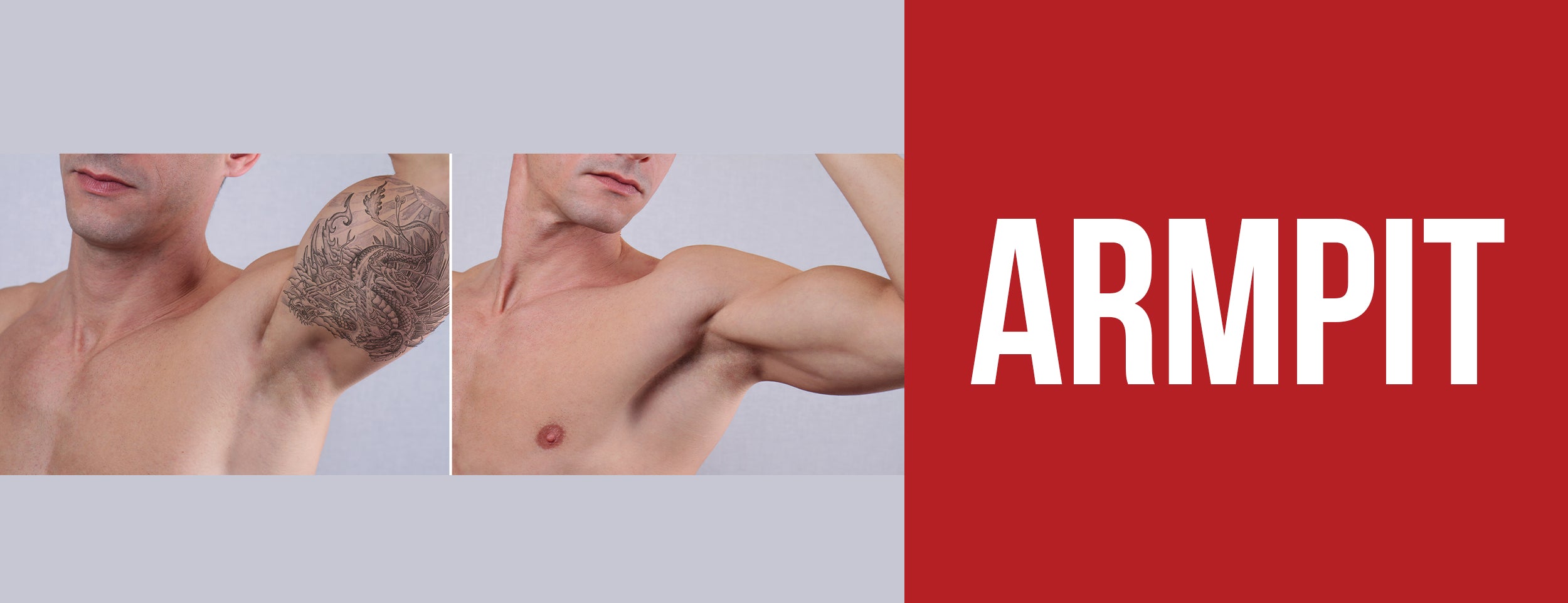
The armpit is painful to get a tattoo at a pain level of 10, if not the most painful area. The armpit contains a lot of nerve endings, making tattoos feel painful.
The armpit has thick skin, making the tattooing process more complex and time-consuming. The armpit also sweats a lot, affecting the tattoo's healing and fading.
Throat/Neck

The throat or neck is also a complex area to tattoo, ranking 8 to 10. The throat or neck has many nerve endings, making it highly sensitive. The skin on the throat and neck is very thin, close to the bone, making the tattoo painful.
It is also flexible and mobile, making tattooing here tricky and uncomfortable. Breathing, swallowing, and speaking can also be affected by the tattoo.
Genitals And Groins
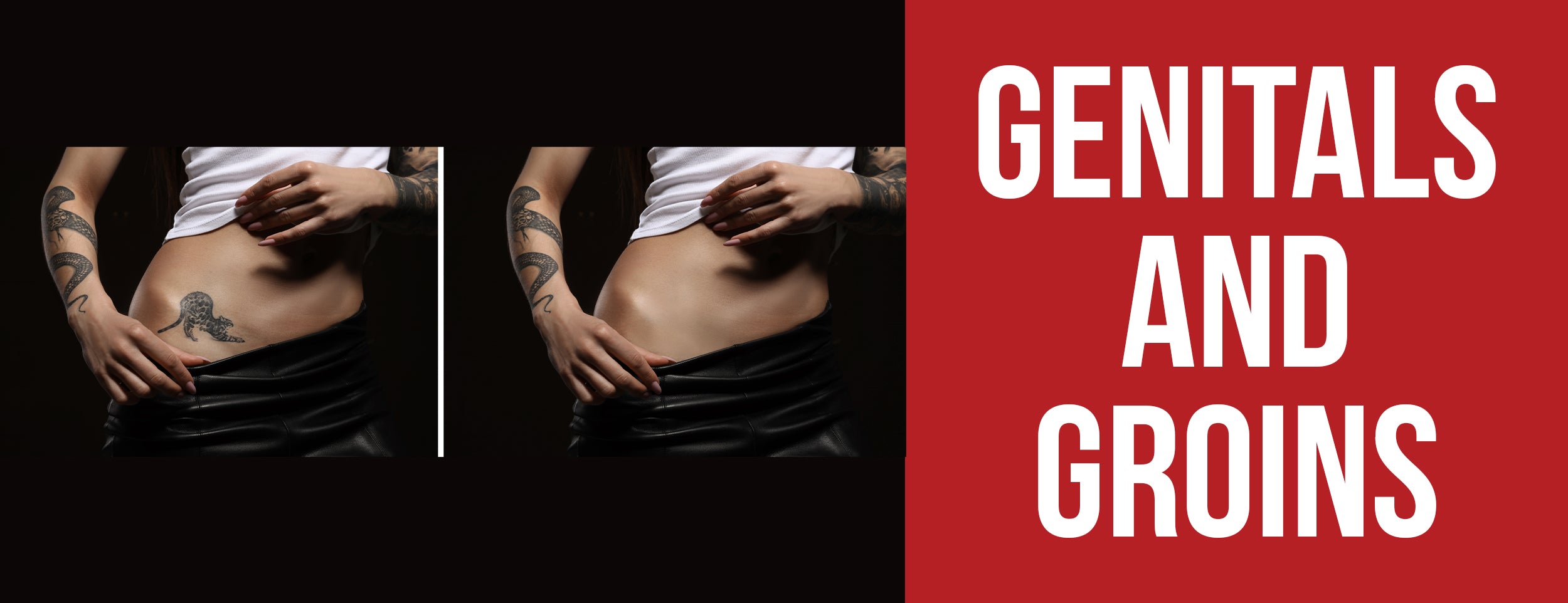
The genitals and groins are also very sensitive to pain, with a pain scale ranking of 9 to 10. The genitals and groins have thin skin and many nerve endings, which can cause tearing or pinching pain.
Genitals and groins are close to the reproductive organs, which are very sensitive and can make tattooing more awkward. Genitals and groins are sensitive to rubbing and irritation, affecting tattoo healing.
Bikini Area

It is also challenging to tattoo the bikini area, causing pain levels between 8 and 10. The bikini area has thin skin and nerve endings that cause throbbing or pulsing pain.
The bikini area is also close to the pubic region, which is very sensitive, and it makes tattooing more embarrassing and painful. The bikini area is also subject to shaving, waxing, or sweating, affecting the appearance of the tattoo.
The Least Difficult Area to Tattoo: Pain Scale 2-5
A certain body part, such as blood or bones, is more sensitive. Consider these spots rated 2-5 on a pain scale of 1-10 for a less painful experience.
Forearm Tattoo
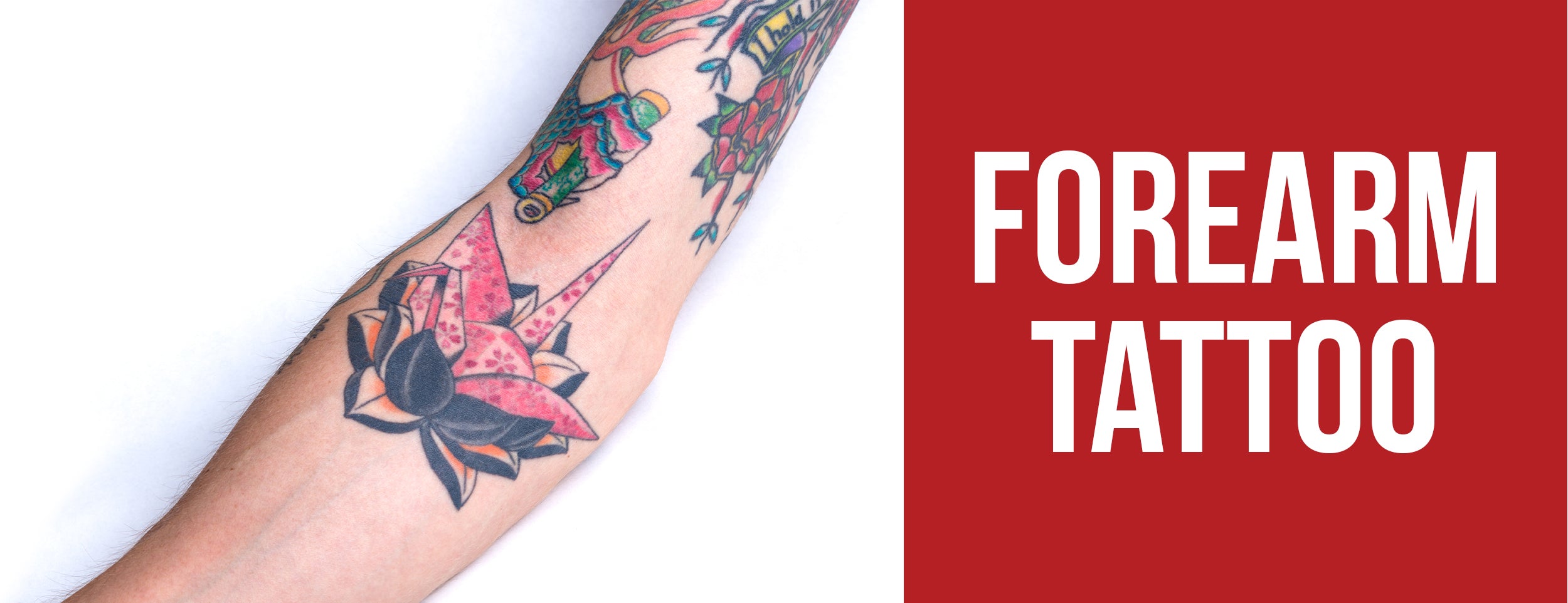
The forearm is a good spot for a tattoo that doesn’t hurt much. The skin on the forearm is thick and has few nerves, so the pain is usually mild and easy to handle.
The pain level for a forearm tattoo is about 2-3 out of 10. The forearm also has a lot of space and can fit original designs and styles. Your forearm tattoo can be on the inside of the forearm or on the outside.
Outer Arm/Upper Bicep or Shoulder Tattoo
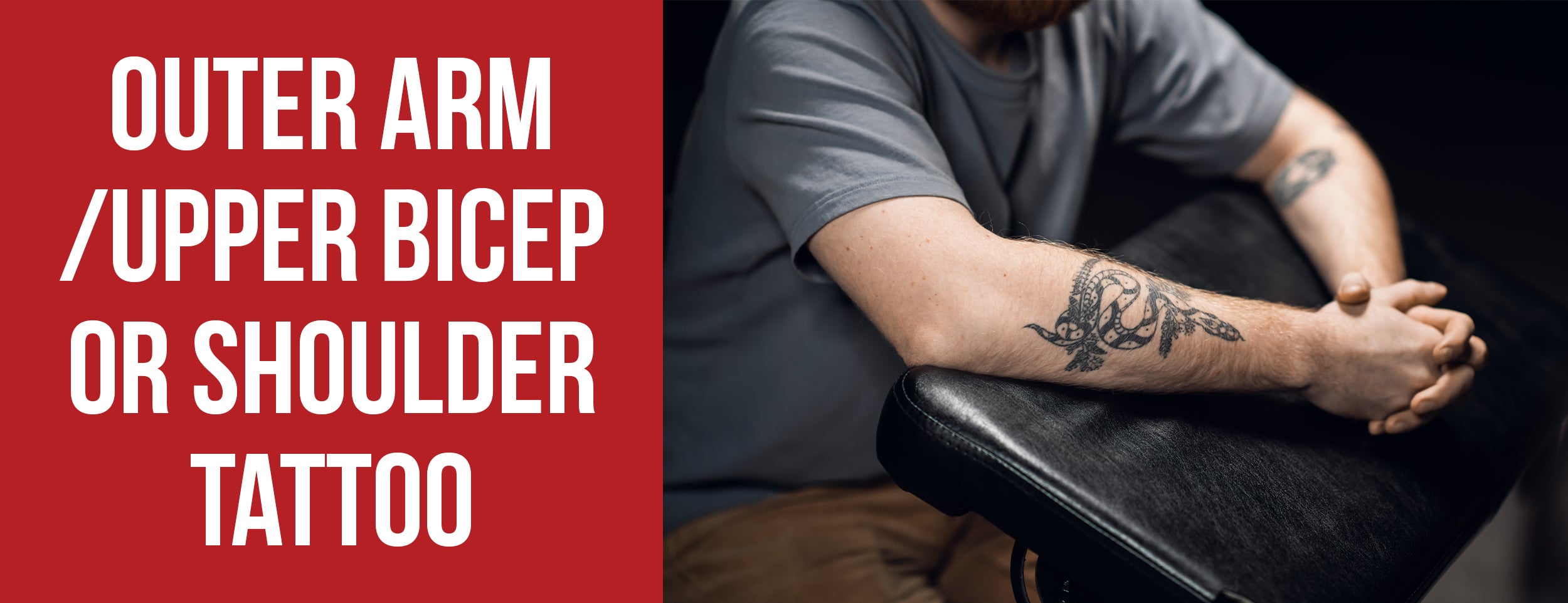
Another spot for a low-pain tattoo is the outer arm, especially the upper bicep or shoulder area. The skin on the outer component is also thick and nerveless, so the pain is similar to the forearm. An upper arm tattoo is about 3-4 out of 10.
The outer arm is also easy to reach and heal; you can show it or hide it as you like. Tattoos can be placed outside of one's outer arm's front, back, or side or extended to the shoulder or chest.
Outer Thigh Tattoo
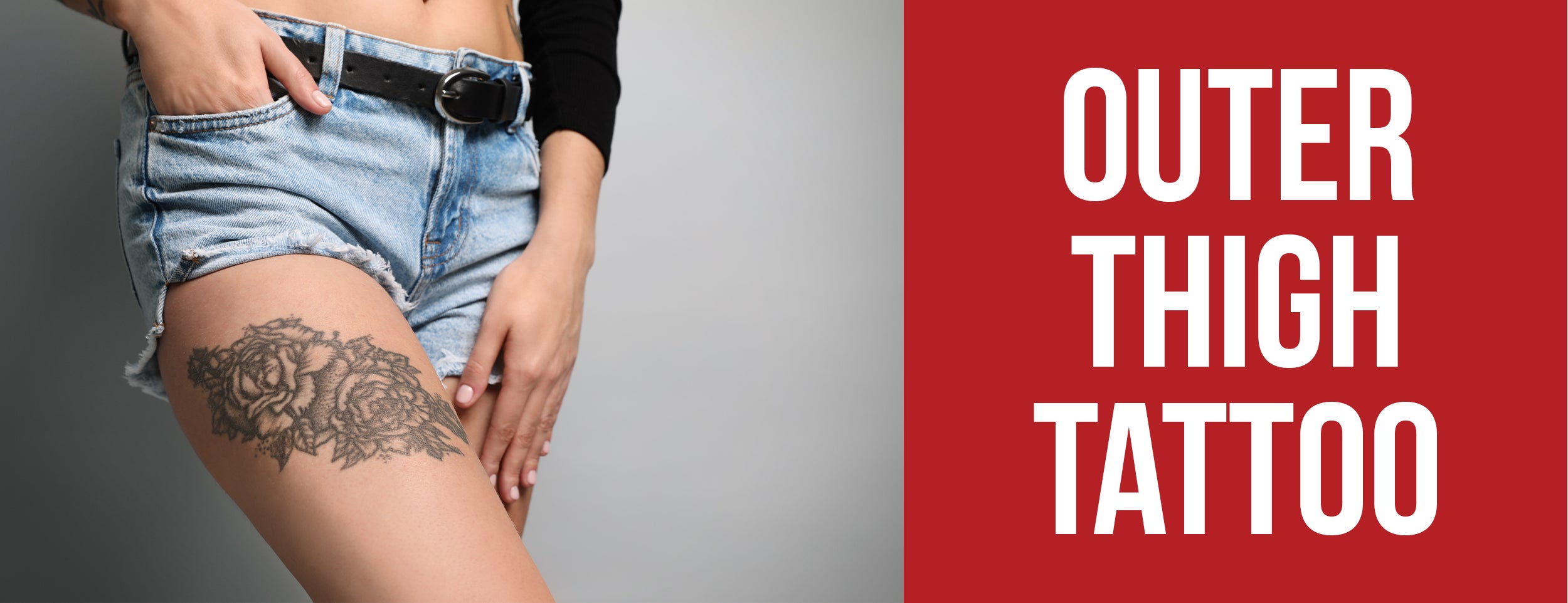
The outer thigh is a great spot for a tattoo if you want to avoid the pain of the inner thigh, which has more nerves and is more sensitive.
The outer thigh has a lot of muscle and fat, which can reduce the pain of the tattoo. The pain level for an outer thigh tattoo is between 3 and 4/10.
The outer thigh also has a large area that can fit more extensive and detailed designs. The tattoo can be placed on the outer thigh's upper, middle, or lower parts or combined with the hip or knee.
Upper or Lower Back Tattoo

The back is another familiar and not-too-painful spot for a tattoo. The upper and lower back have thick skin and muscles, which can lower the pain of the tattoo. The pain level for a back tattoo is about 4-5 out of 10.
The back is spacious and has a shape that can match original designs and themes. The tattoo can be placed in the center, left, or right side or cover the whole back with a large piece.

Stomach Tattoo
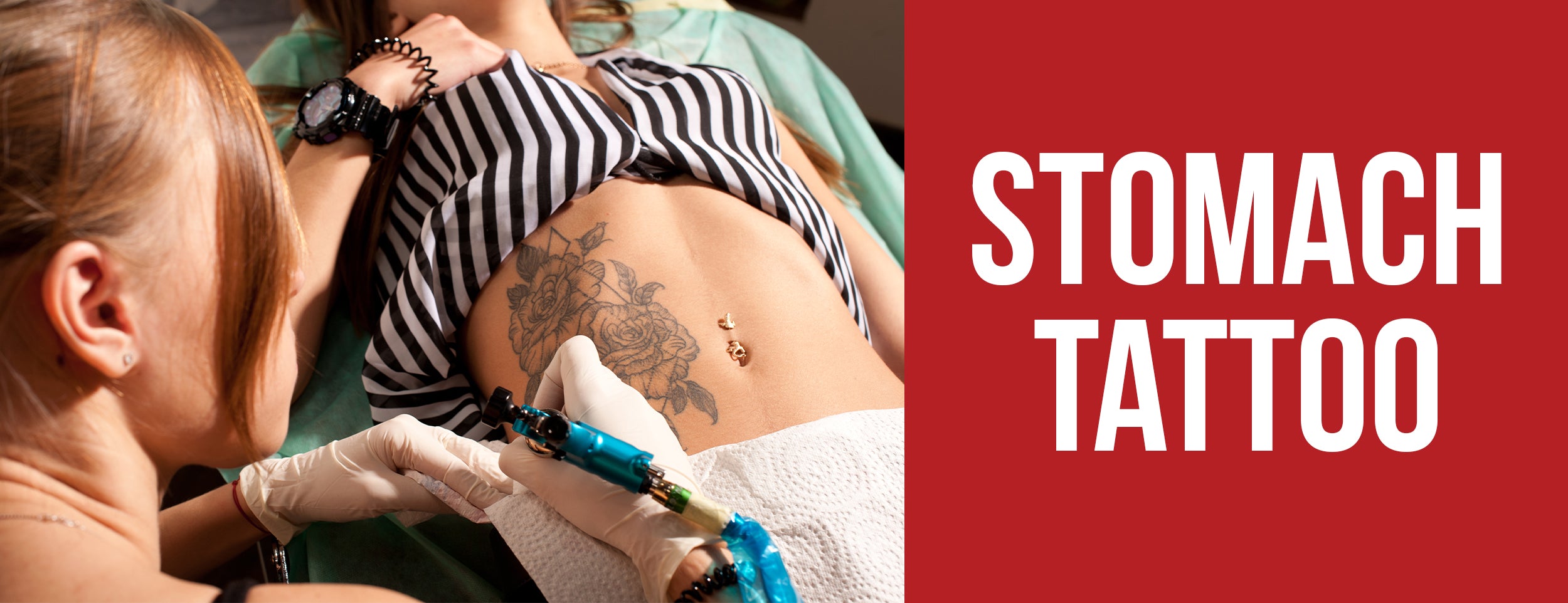
The stomach is a tricky spot for a tattoo, as it can change in pain depending on your location and body type. The stomach has more painful areas, such as the belly button, the ribs, and the sides. The stomach also has less painful spots, such as the upper or lower abdomen, with more fat and less nerves.
The pain level for a stomach tattoo can vary from 4-5 out of 10. The stomach can be perfect for tattoos if you want to hide it or show it off, and it can also stretch or shrink with weight changes.
Calf Tattoo
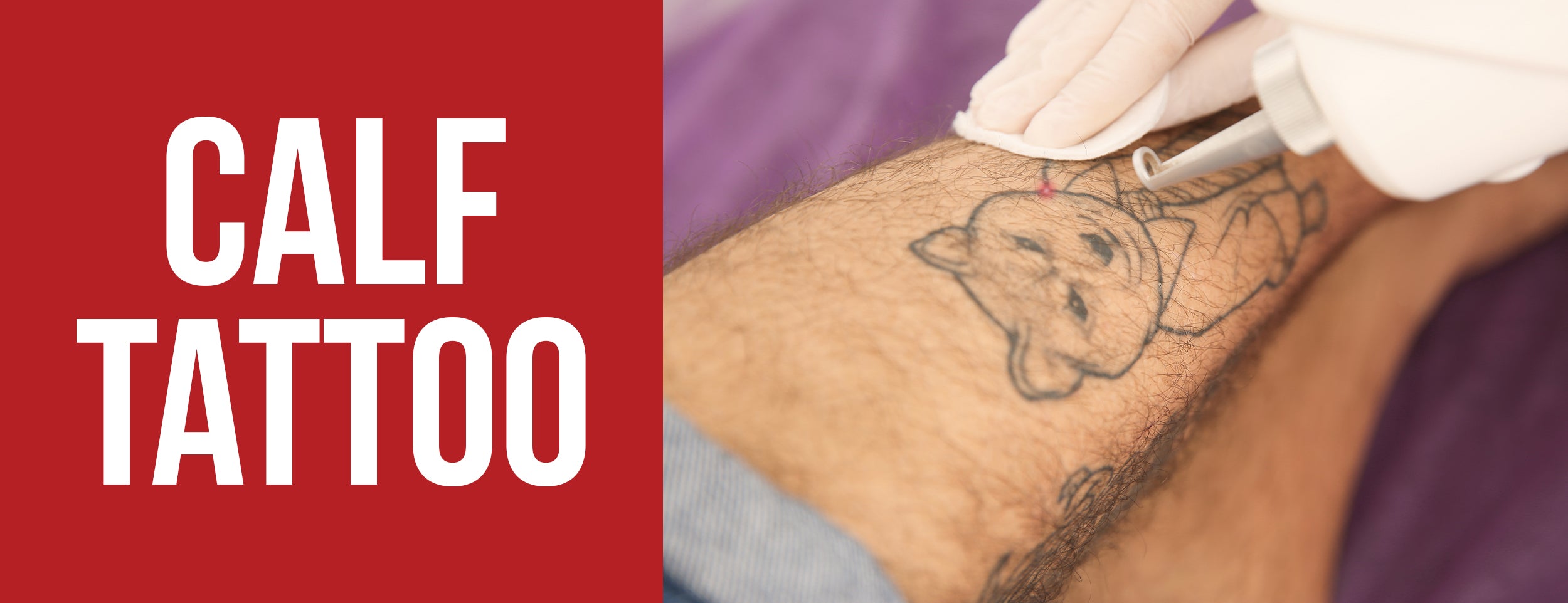
The calf is a low-pain and high-visibility spot for a tattoo. The calf has thick skin and muscles that make the pain of the tattoo small and manageable. The pain level for a calf tattoo is 4-5 on a scale of 1-10. The calf also has an excellent shape and size, which can suit unique designs and styles. It is possible to have a tattoo on the front, back, or side of the calf or around your entire leg.
Moderately Painful Tattoo Spots (Pain Scale Ratings 5-7)
The rather painful tattoo spots are areas of the body with thin skin, close to bones, or many nerve endings. Pain in these areas may be moderate to high. Here are some moderately painful tattoo spots:
Inner Bicep Tattoo
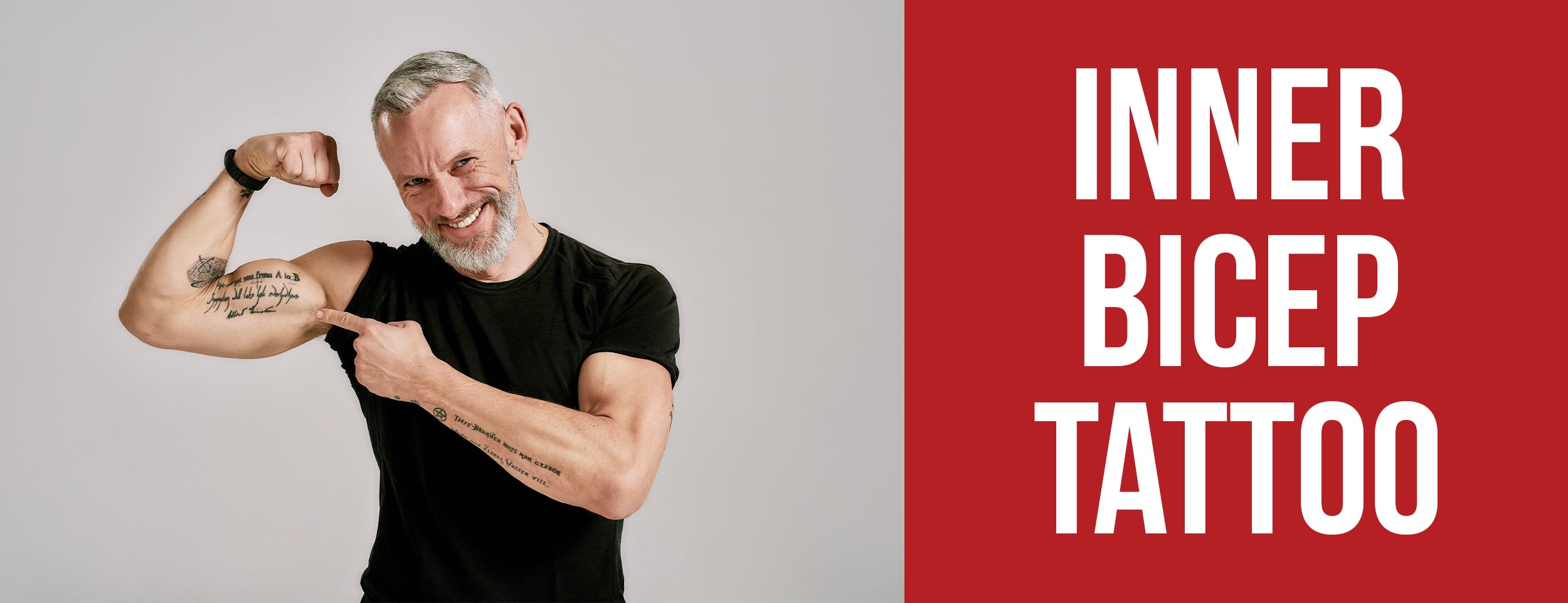
The inner biceps are a more painful spot for a tattoo than the outer biceps. The skin on the inner biceps is thinner and has more nerves, so the pain is more intense. The pain level for an inner bicep tattoo is about 5-6 out of 10.
The inner bicep has less space and can be harder to reach and heal. Your tattoo can be on the front or back of the inner biceps or the entire arm.
Hip Tattoo
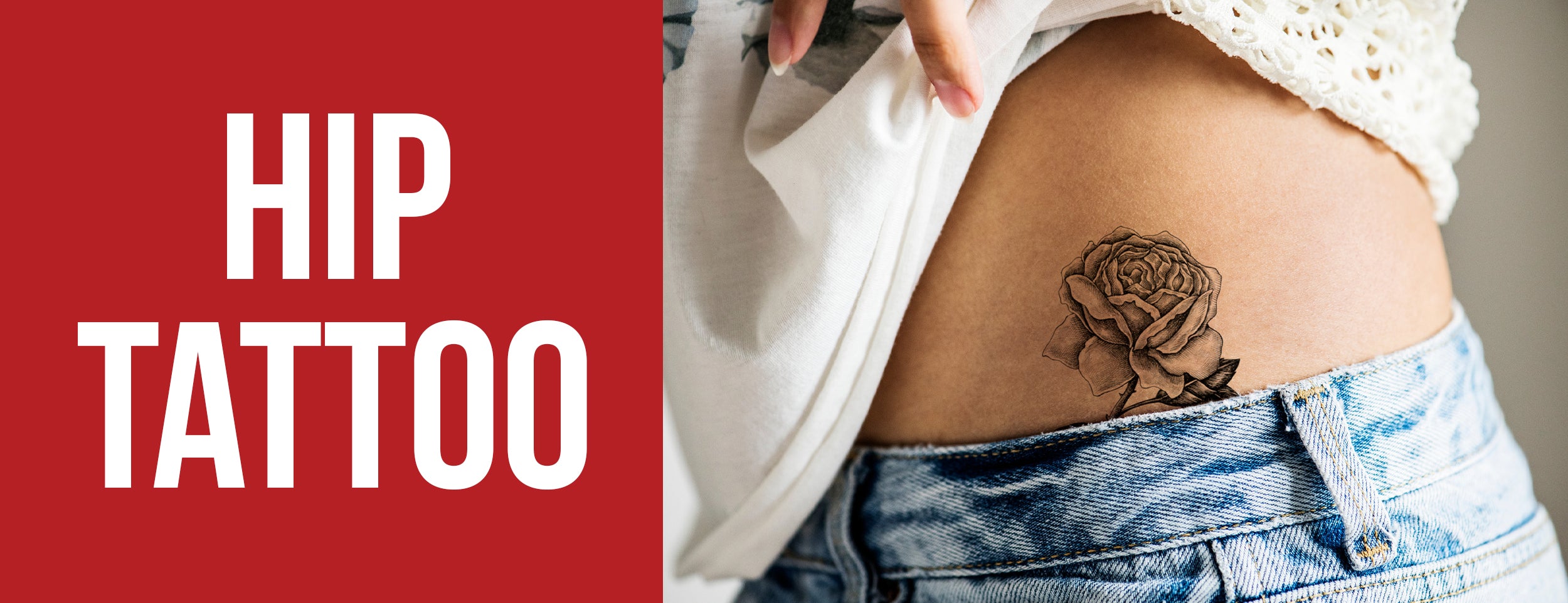
The hip is a painful spot for a tattoo, especially for women. The skin on the hip is thin around the bone, so the pain is very sharp. The pain level for a hip tattoo is about 6-7 out of 10. The hip also has a lot of movement and friction, making the healing process longer and more uncomfortable. You can get your tattoo on the side or back of the hip or extend it to the thigh or stomach.
Buttocks Tattoo
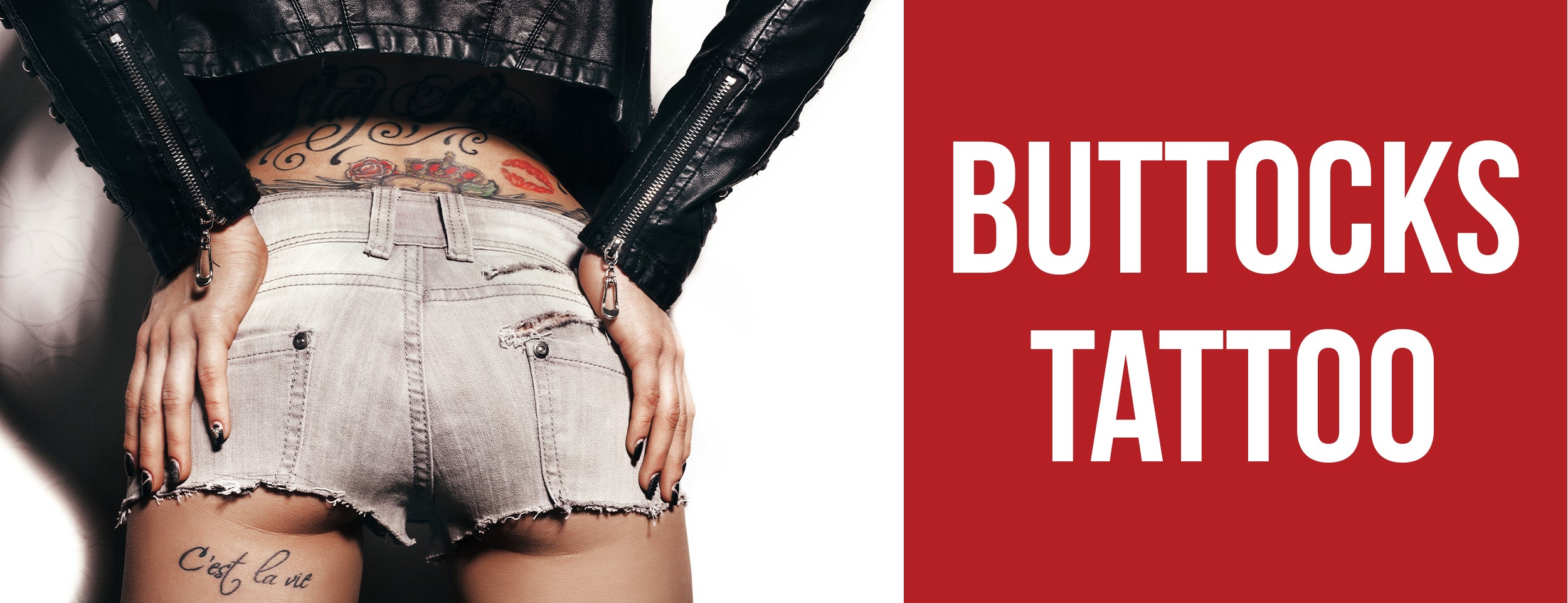
The buttocks may seem less painful for a tattoo, but they are pretty sensitive. The skin on the buttocks is thin and loaded with nerve endings, so the pain is moderate to high. The pain level for a buttocks tattoo is between 5 and 6.
The buttocks also have a lot of pressure and contact, affecting the healing and quality of the tattoo. It is possible to tattoo the upper, middle, or lower part of the buttocks or cover the total area with a large piece.

Lip Tattoo
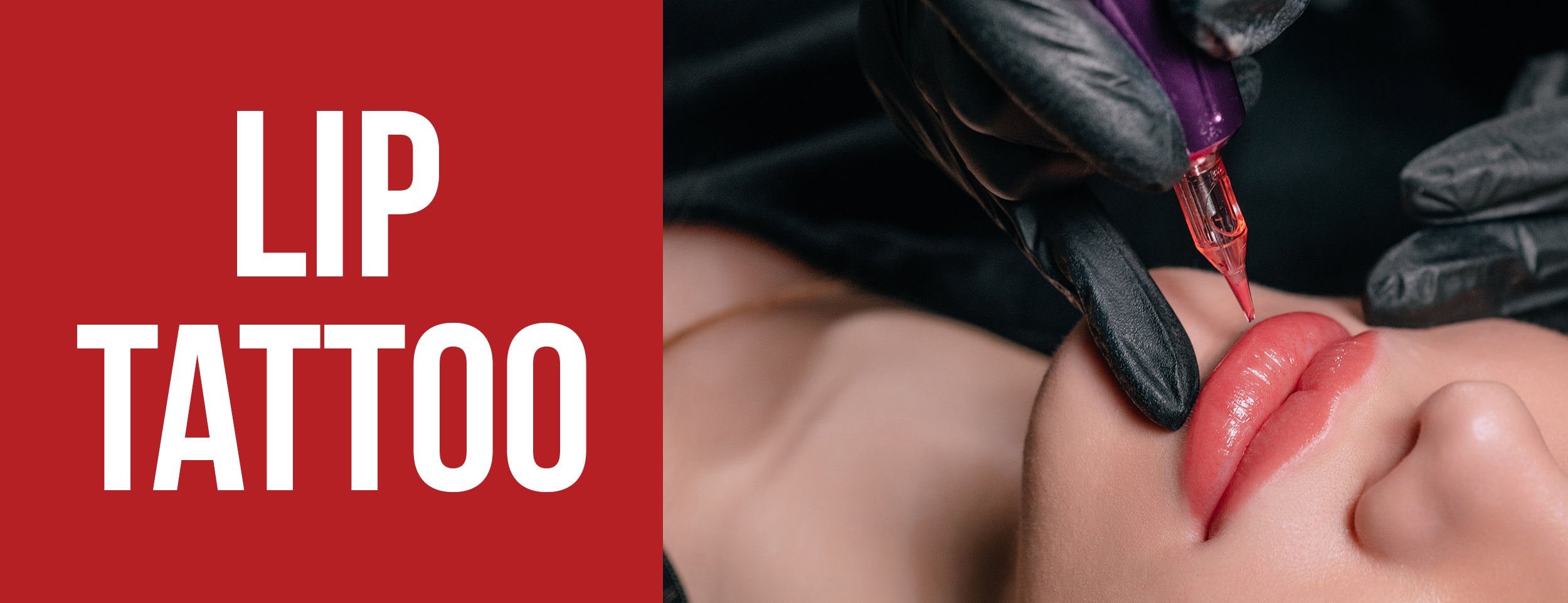
The lip is one of the most challenging areas to tattoo, as it is one of the body's most sensitive parts. The skin on the lip is fragile and filled with nerve endings, making the pain very high. The pain level for a lip tattoo ranges from 6 to 7.
The lip also has a lot of moisture and bacteria that can cause infection and fading. Tattoos can be inside or outside the lip or upper or lower lip.
Tattoo Pain Management
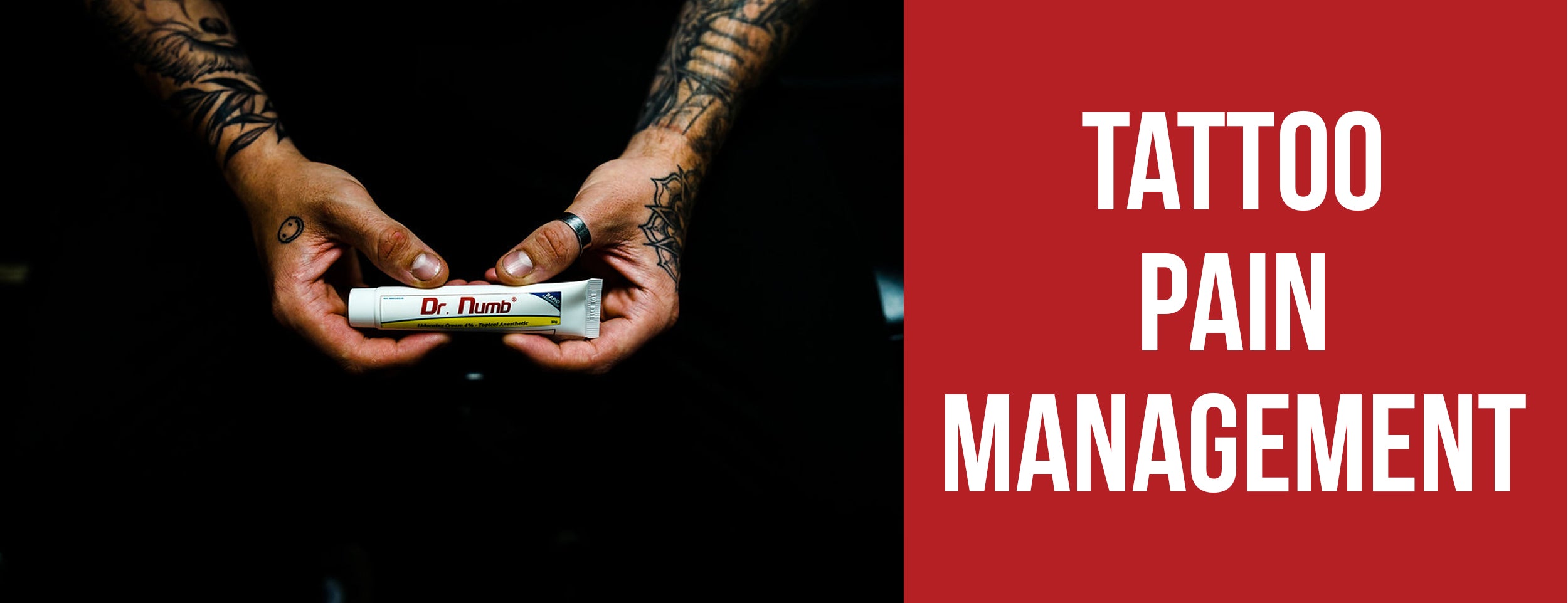
Getting a tattoo might hurt, but it's not unbearable. You can manage the pain by following these tips:
- Find a good tattoo artist: They'll use proper techniques and equipment to minimize pain and infection risks.
- Prepare yourself physically and mentally: Ensure you're in a good mood and health. Avoid substances that affect blood pressure or clotting. Stay hydrated, sleep, and eat well. Relax and breathe deeply during the session.
- Distract yourself: Listen to music, watch TV, read, talk to someone, or play games on your phone to divert your attention from the pain. Avoid looking at the needle or blood if it makes you uncomfortable.
- Consider numbing products: If you're sensitive to pain, temporary numbing creams, sprays like Dr. Numb, or patches can help. Be cautious, as they may have side effects or affect the tattoo quality.
- Take breaks if needed: If your tattoo is large and takes hours, ask your artist if you can take abrupt breaks to rest without impacting the tattoo.
- Follow aftercare instructions: Keep your tattoo clean, moisturized, and protected from the sun by following your tattoo artist's instructions. Keeping it clean will prevent infections or complications.
Conclusion
The art of tattooing is an intensely personal journey as unique as the design itself. The pain intensity varies and is influenced by the recipient's threshold and anatomy. While some may consider the head, elbow, or ribcage to be the zenith of agony, others may find even moderately painful spots like the inner biceps, hip, or rib cage to be challenging.
Least painful areas, such as the forearm, thigh, or back, can be safe grounds for first-time tattoo bearers. But, daredevils seeking to challenge their pain tolerance, a trip down our list of 'real sting' zones might pique your interest.
Whichever path you choose, remember that the real essence of tattooing lies in enduring the pain for the beauty and meaning that emerges after. So, prepare yourself mentally, choose your painful poison, and embark on this wildly fulfilling journey of self-expression.


















![Antibiotics and Tattoos: 3 Risks and 3 Effects [with 4 Precautions]](http://drnumb.com/cdn/shop/articles/Can_You_Get_Tattooed_On_Antibiotics__3_Risks_and_3_Effects_4_Precautions.jpg?v=1714128292)

